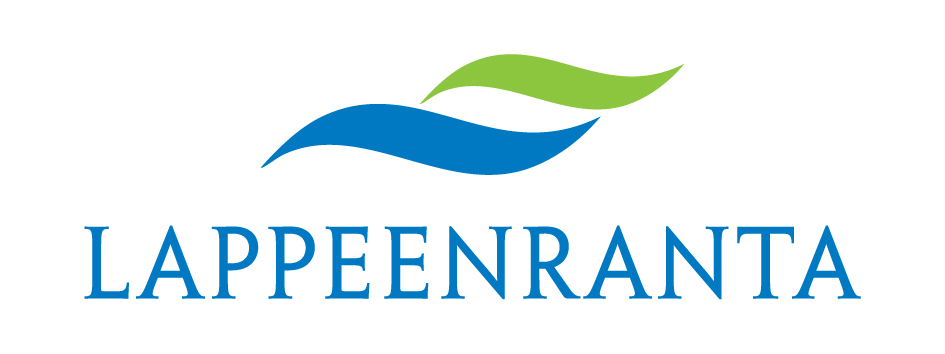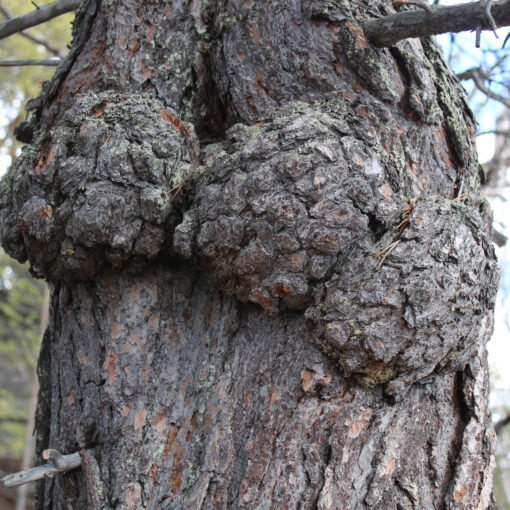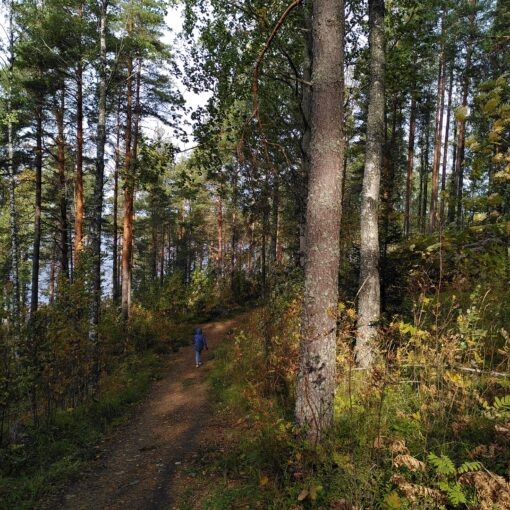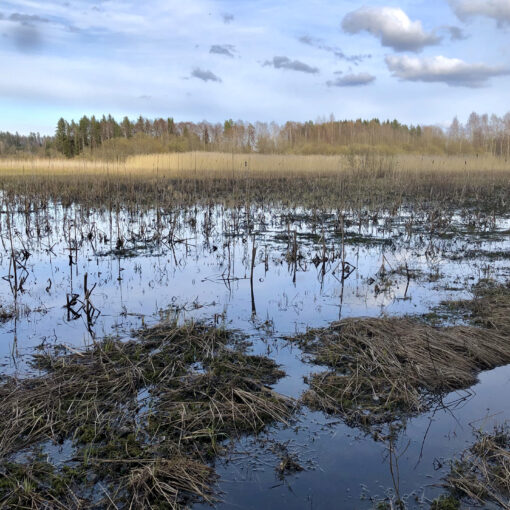A few years ago, Lappeenranta launched a meadow network project aimed at saving on maintenance costs, utilising excavated soil, reducing the carbon footprint and increasing the diversity of the urban environment. The development of the network also aims to strengthen the regional image, the landscape value and the diversity of the recreational environment available to residents.
The meadow network consists of actual meadows and their support areas, such as forest edges, allotments, parks and gardens. During 2019–2021, 40 new meadow sites were created, and they are mainly located near built environments.
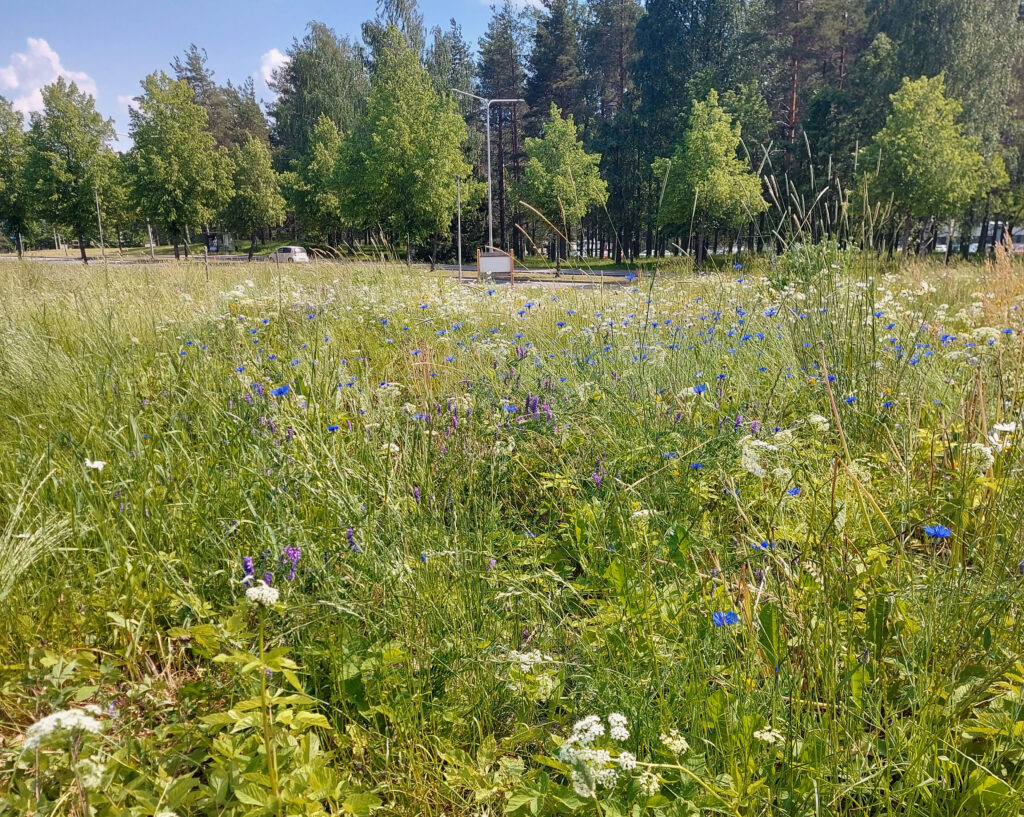
The implementation of the meadows is based on a master plan for the meadow network
The idea of the meadow project had been on the table for quite a long time, but the project got off to a proper start when the master plan for the meadow network was drawn up in 2019. The plan was prepared by the planning consultancy company Ramboll Finland Oy under the guidance of the City of Lappeenranta’s multidisciplinary steering group.
The planning area of the master plan for the meadow network included Lappeenranta city centre and the surrounding built environments as well as the urban areas of Joutseno and Rauha. At the beginning of the planning process, the planning area’s existing meadows, meadow support areas and potential areas to be converted into meadows in urban environments were mapped. Analysis maps on the habitat types, soil and blue network of the areas were also prepared to provide initial data for planning.
Based on the mapping and initial data, a master plan for the meadow network as well as construction and maintenance cards for different meadow types were prepared for further planning and implementation. The construction and maintenance cards define the characteristics of the meadow types and the target states, establishment methods and maintenance of the meadows. More detailed planning and implementation of the pilot sites was started as soon as the master plan was completed.
Meadow networks strengthen biodiversity
Over the past few years, the Streets and Environment Team of the Vitality and Urban Development sector of the City of Lappeenranta has been systematically implementing the city’s meadow network. The development of the network and the resulting connectivity of the meadows will strengthen biodiversity. As Lappeenranta is located on top of a Salpausselkä ridge and the area’s soil is naturally barren and permeable to water, it provides particularly favourable conditions for the development of meadows and dry meadows.
There are also valuable sunlit environments and their species as well as open-habitat insect species in the region. The proximity of the Russian border also has ecological importance, as new southern species are spreading from the southeast.
The meadow area network supports the biodiversity of the densely built city centre. The meadows may be small in size, but they are large in importance. The meadow network also highlights the importance of roadsides and other so-called wastelands for biodiversity.
The meadow network also creates recreational opportunities
Meadows also serve recreational purposes. For example, the Pappilanpelto meadow in the Lappeenranta arboretum is a popular outdoor area and picnic spot near the city centre. The park area is of particular importance to the residents and has also served as a venue for several community events. There is also a café, an art gallery and a summer theatre next to the area.
Another good example of meadows serving a recreational purpose are the meadows of the fortress in central Lappeenranta. The meadows of the fortress area cover almost four hectares. The fortress meadows are valued meadows and home to endangered plants. The area has a significant cultural-historic value as it has been inhabited since the 16th century and ancient cultivated plants from past centuries have been preserved in the area.
The environment of the fortress is a key recreational area for those living in and visiting Lappeenranta. Many kinds of activities are organised in the fortress area, in addition to which there are residential buildings, museums, an art school and a nature and cultural trail, among other things.
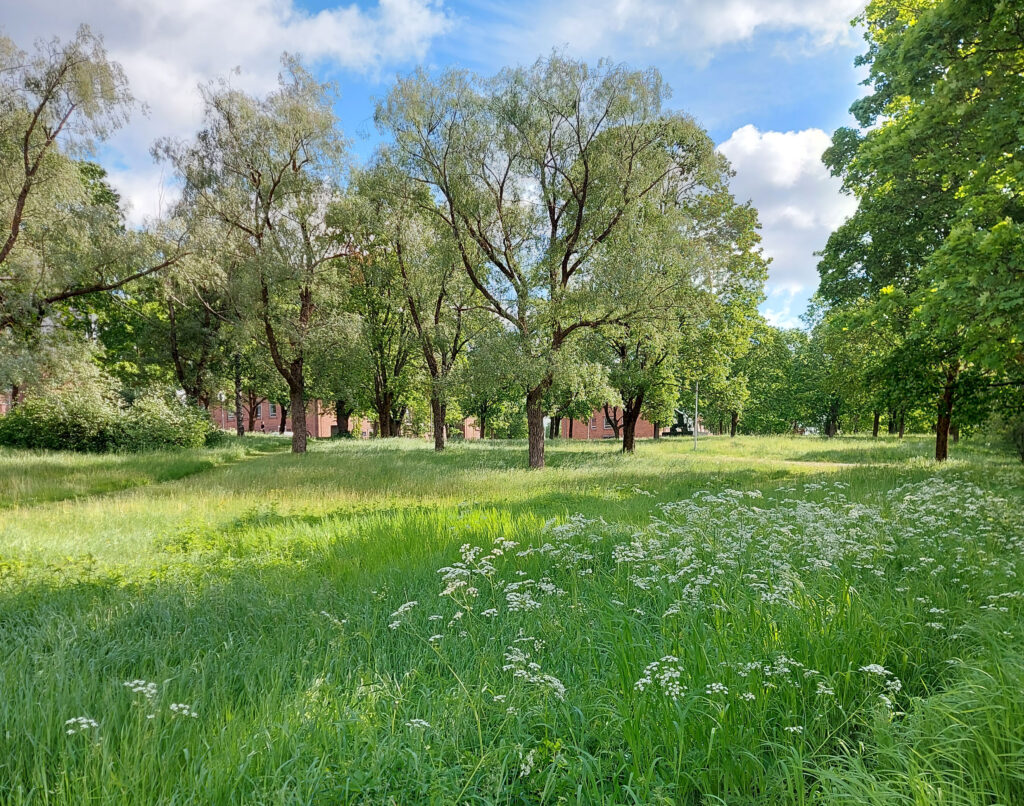
Cost-efficiency and volunteer activities as future plans
The development of Lappeenranta’s meadow network will continue in the coming years. With the growing meadow network, the planning and implementation of meadow management is also under development. The goal is to find the most cost-effective maintenance solutions. The suitability of the maintenance equipment for the maintenance of meadows poses another challenge.
As the number of meadows in the built environment has increased, residents have also started to express interest in them. At the beginning of the meadow project, there were some enquiries concerning the management of the meadows, but the amount of feedback has decreased as awareness related to the meadows has increased.
The next goal is to involve residential groups, communities and organisations in the development of the meadows. There are plans for volunteer activities in which volunteers will participate in the establishment and maintenance of the meadows, for example. This brings residents closer to the meadows and their benefits.
More information
- Laura Ratilainen, City of Lappeenranta, laura.ratilainen@lappeenranta.fi

